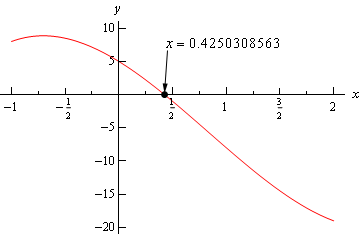1. What is a continuity? What is a discontinuity?
Up to this point, we've all become familiar with continuities. A continuity can be described or classified by many different aspects, one being it is predictable. By the graph being predictable, we always know where its headed on either sides because it continues on forever and ever. Because the function reaches infinity on both sides, we must know why; because it has no jumps, no breaks, and no holes. Why? Because it's continuous! A break is when the graph stops at a simple value, a jump os when the graph breaks into two separately placed functions that land on different left and rights; a hole is the lack of a value. These all three entail that at some point, the function stops which means it is no longer continuous. A continuity can be drawn without ever lifting a pencil.2. What is a limit? When does it exist? What is the difference between a limit and a value?
To start, a limit is an indented height of a function. A function has many, many limits because they can be found basically anywhere on the graph. However, this does not mean that EVERY function has a limit, no because there are several types of functions. As we've gone over the difference between continuities and discontinuities, we know that discontinuities are grouoed into two categories: removable (a point discontinuity where the function has a limit but also has the value in a different y-value) and un-removable(a jump where they have different left and right positions, an oscilating which means it has no set x-value, and an infinite which is classified by an asymptote that causes unbounded behavior).
This example shows two different un-removable discontinuities, an oscillating and an infinite. Because the oscilatiing entails that there is no set value, then we know that the limit does not exist. Same goes for the infinite; because it reaches towards infintity by the vertical asymptote, the value is virtually never reached because infinity is not a true value. This means that the value is never reached ergo the limit does not exist.
There is one more where the limit does not exist; in jump functions. A limit is where both the left and the right mesh to the same place when going towards the center. In a jump, we cannot trace to the same position by the left and right so we say that it has different left-and-right. Ultimately, this means that the limit does not exist.
From this, we can assume that limits do not exist in unremovable discontinuities. The same cannot be said for removable which is a point discontinuity. If we refer to the picture above again and avoid one of the functions, we will see that it has one function with a hole and a strange dot that signifies the actual value. This is a point discontinuity where the limit and value both exist which means that the limit also exists.
3. How do we evaluate limits?
When we evaluate limits numerically, we basically put them in a table. This table is used to show where the function goes when approaching a value.http://people.hofstra.edu/stefan_waner/realworld/tutorials/frames2_6a.html
Usually, this is done by moving by a tenth each time. as seen in the photo above, we see that the graph gradually gets closer and closer to the value in the middle.
When we evaluate limits graphically, we do just that! By graphing the function.
To evaluate graphically just means that we need to graph the function and see the graph and the way it actually looks. This generally is better way of evaluating because we can see the values and limits all in one photo.
Algebraicallly, a limit can be evaluated one of three ways: through substitution, factoring, and rationalizing.
10. https://www.youtube.com/watch?v=CvB4080WC48Although we always want to start with direct substitution. This means that we substitute the number being approached for every x value. If the value is 0/0 then we have to change methods. The factoring method is next because it allows us to cancel out to then simplify. If neither work, we refer to rationalzing and multiplying with conjugates. Usually this allows us to break it down into an easier solution. Then after conjugating we once again directly substitute for all the x variables.




No comments:
Post a Comment